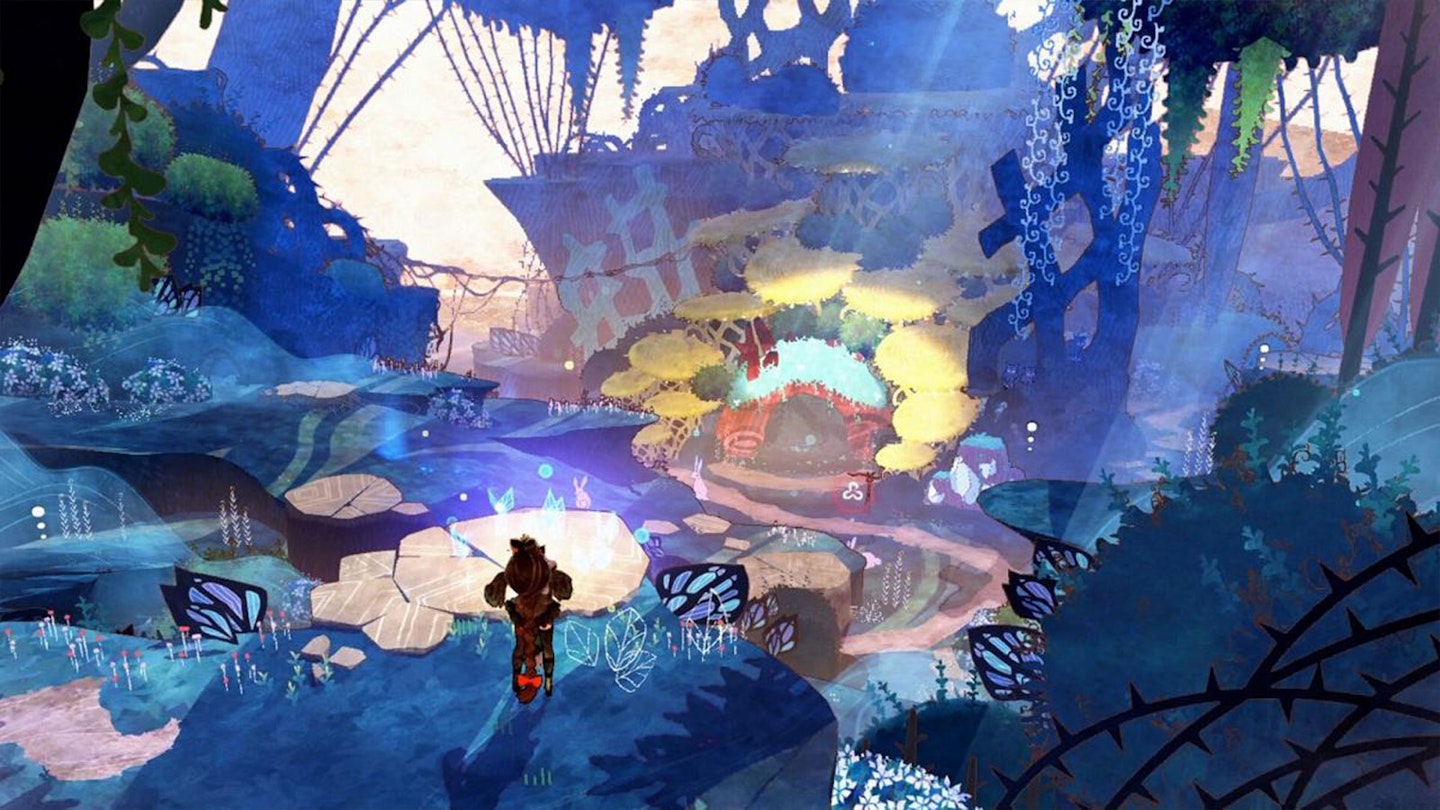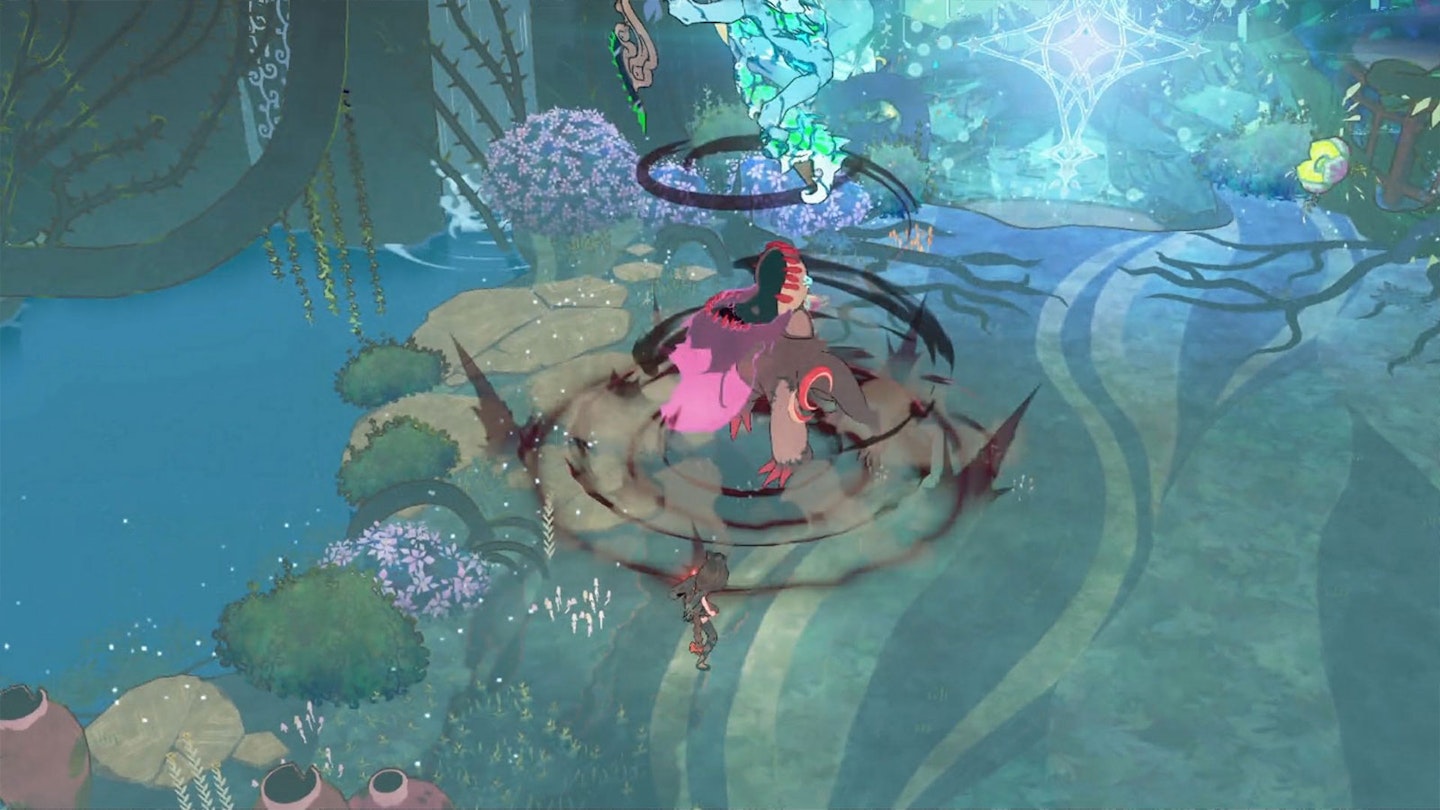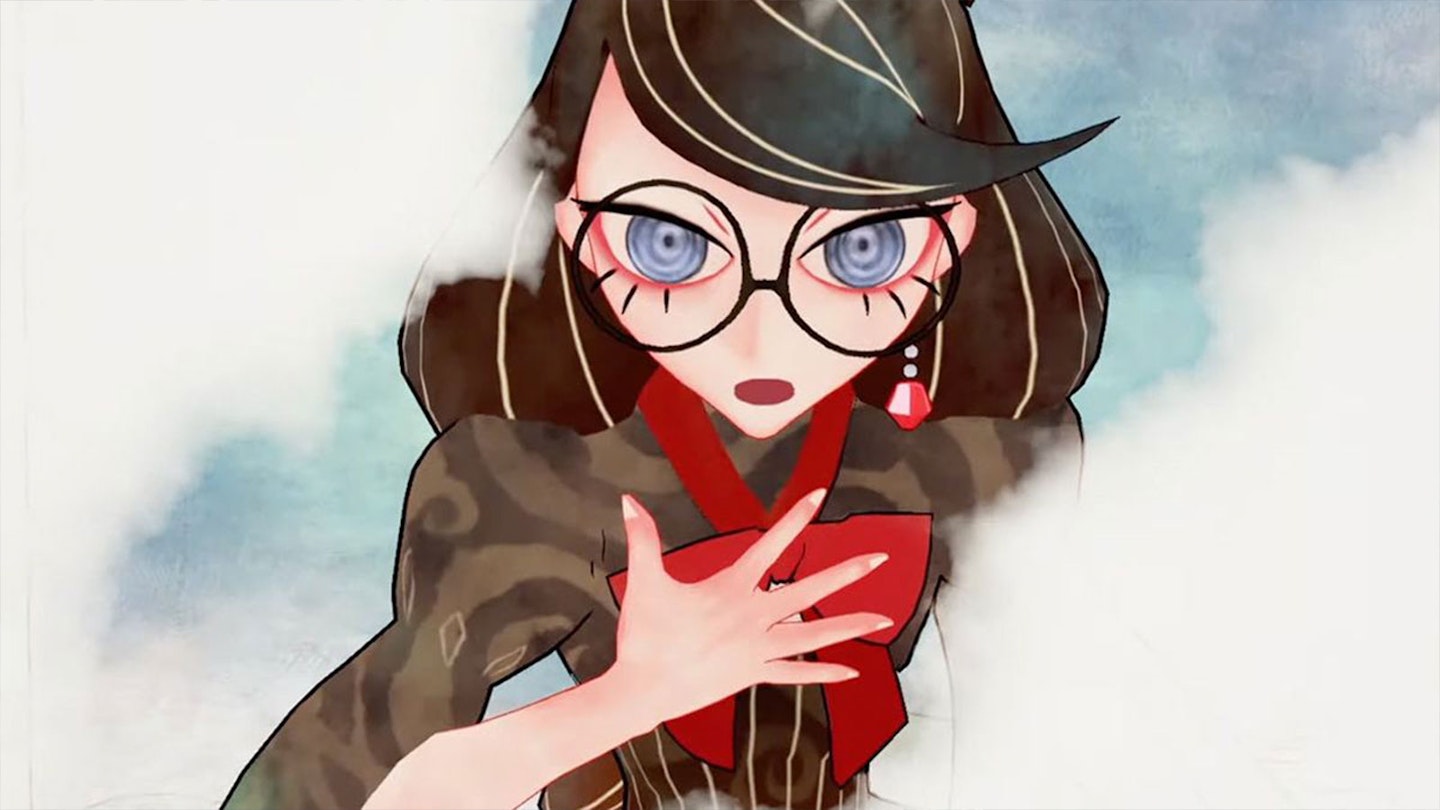Platforms: Nintendo Switch
Once upon a time, there was a powerful and mysterious witch, one who walked the line between heaven and hell, and whose very hair could channel demons. That witch can be found in the Bayonetta trilogy. Bayonetta Origins is an altogether different fable, one exploring how an uncertain, outcast girl started out on the path to become the confident, powerful woman of the core games. Set hundreds of years ago, the game sees players guide the young Cereza – Bayonetta’s real name – through the mysterious Avalon Forest on a quest to save her doomed mother. With barely any magical skills of her own to call on yet, she must rely on her stuffed cat, Cheshire, to survive the dark forces at work in the forest. Helpful, then, that Cheshire can transform into a giant monster to protect Cereza.
Abandoning the frenetic action, zippy combat, and wild visuals that fans of the series are familiar with, Cereza And The Lost Demon is instead more of a narrative driven puzzle adventure, with a strong storybook aesthetic. Actually, “aesthetic” doesn’t quite capture the full approach of Bayonetta Origins – with dulcet narration and deliberate pacing, this very much feels like an interactive fairy tale that’s being told as much as it is played.

While developer PlatinumGames has thankfully – given the protagonist’s age here – dropped the provocative and sexual elements of the adult Bayonetta, it doesn’t result in a sanitised or cloyingly juvenile outing. Like some of the earliest fairy tales, there’s a satisfyingly dark edge to the world, a frisson of danger centred on children being lured into peril and, perhaps, learning hard lessons along the way.
Tapping into Celtic mythology as often as it alludes to works of literary fiction, players will tackle malign fairies and struggle through warped realities as they navigate Avalon’s twisted depths, only able to restore comparative sanity by completing challenges locked in pocket dimensions called Tír na nÓgs. Sometimes these will be simple combat trials, where Cereza tangles enemies in vines while Cheshire mauls them. Others present more cerebral puzzles, or environmental obstacles to guide Cereza through while using Cheshire to move equipment. Once a Tír na nÓg has been completed, the disruption it caused in the ‘real’ forest is cleared, allowing new areas to be accessed or previously blocked regions to be reached. This, combined with later abilities that activate gates or allow passage through obstacles, add a slight Metroidvania flair to progression and exploration.
It’s clear that developer PlatinumGames is trying to create some level of synergy between its two primary protagonists, but it never quite works.
Unfortunately, while Bayonetta Origins exudes charm with its visuals, it’s let down by fiddly mechanics and repetitive design elements. There are essentially three overlapping control schemes, depending on whether Cheshire is carried by Cereza in his plush toy form. Dubbed Hug Mode has Cereza moved by the player, while Cheshire can be stretched out to reach objects using the right thumbstick. With a tap of a button though, Cheshire can shift into his more intimidating demon form, in what’s called Unleashed Mode.
This is where things start getting tricky. In Unleashed mode, players control both characters at once, moving Cereza with the left thumbstick and using her magic with the left shoulder buttons, while Cheshire’s movement and attacks are governed by the mirrored controls on the right-hand side. For the most part, it’s simple enough – so long as you keep each character on their respective side of the screen. Should they cross over, which is often necessary during combat, you’d better have some spectacularly quick spatial reflexes, as suddenly each character feels as though their controls have inverted.

It’s clear that developer PlatinumGames is trying to create some level of synergy between its two primary protagonists, with a control scheme designed to enable controlling both characters at once, but it never quite works. As the pair’s abilities are upgraded at rest points, you’ll discover skills that emphasis switching between Hug and Unleashed mode – for instance, Cereza’s magic gauge refills slightly faster when holding Cheshire – but it doesn’t entirely come together. After a while, you’ll likely default to running around as Cereza holding Cheshire in Hug Mode, only unleashing the beast when necessary to get through battles or solve puzzles.
Thankfully, combat is nowhere near as frenzied as in the grown-up Bayonetta games, so you’ll usually be able to take a breath, move Cereza into position to hold an enemy in place, then move Cheshire to attack. It works, just about, but it lacks the finesse and smoothness fans may expect from the series as a whole, even after accounting for the genre shift. There are still some nods to the skill-oriented gameplay of those core games – Tír na nÓgs can be replayed from rest areas to improve your time score, for example – but it’s still a big departure.
All of which leaves Bayonetta Origins in a limbo as strange as Avalon Forest itself. Its main appeal will be to those already invested in the (surprisingly complex and convoluted) lore of the previous Bayonetta outings, but it offers such a vastly different experience, and at a significantly slower pace, that the end result may grate. Conversely, players who may be won over by its dark charms and more considered pace to exploration will drown in a story that demands at least partial familiarity with the source material. Meanwhile, the muddled combat is unlikely to truly please either camp.
If you find yourself at the centre of that particular Venn diagram of interests, experience, and expectations, Cereza And The Lost Demon serves as a nice spin-off to Bayonetta prime. For anyone else, it’s a curious little excursion that doesn’t quite stand on its own merits.
